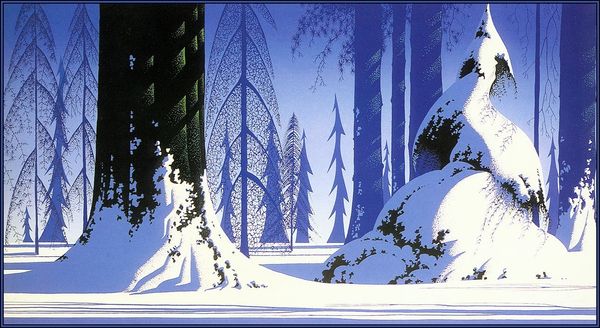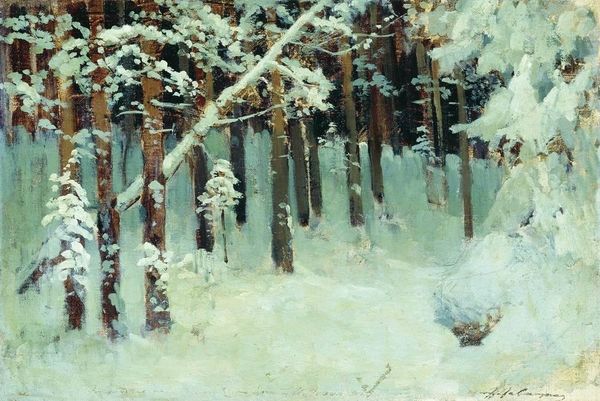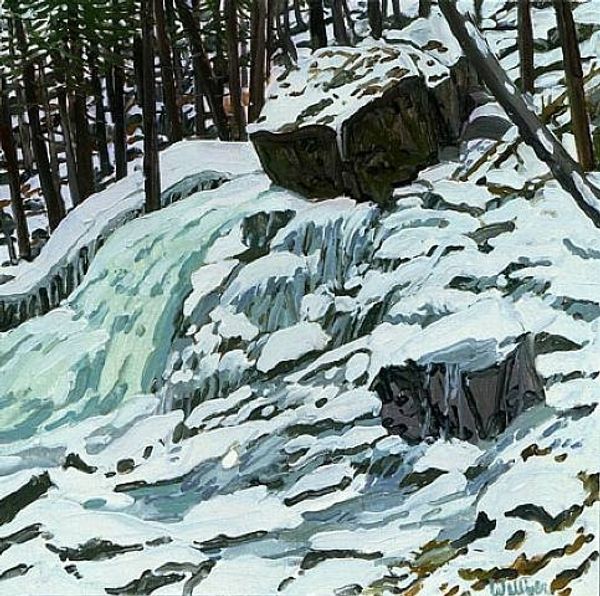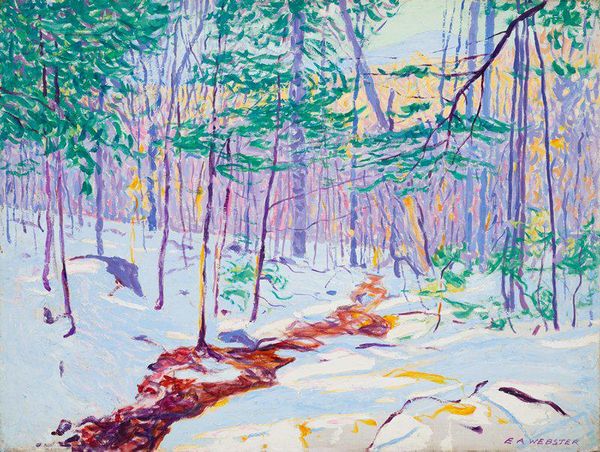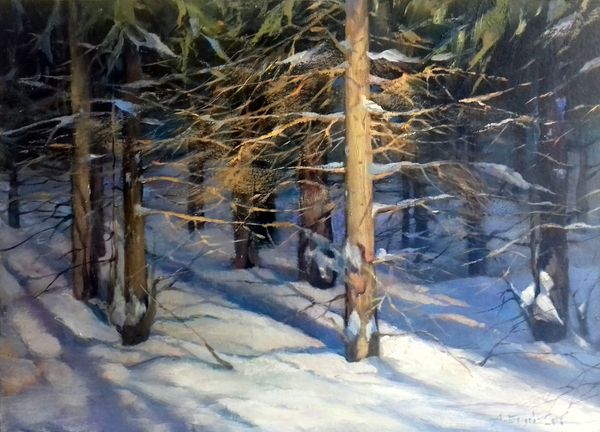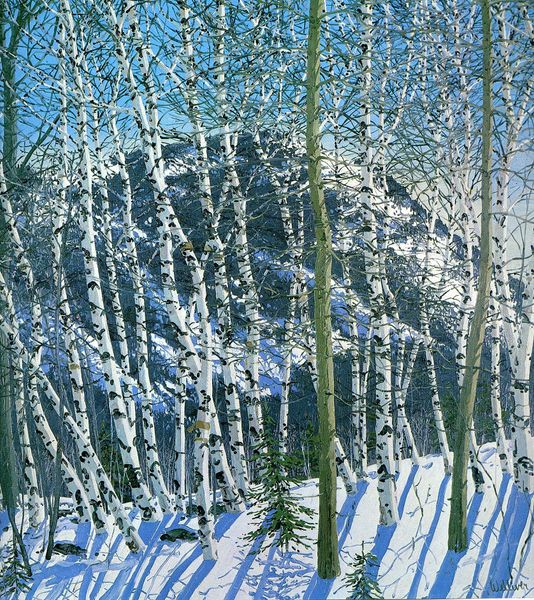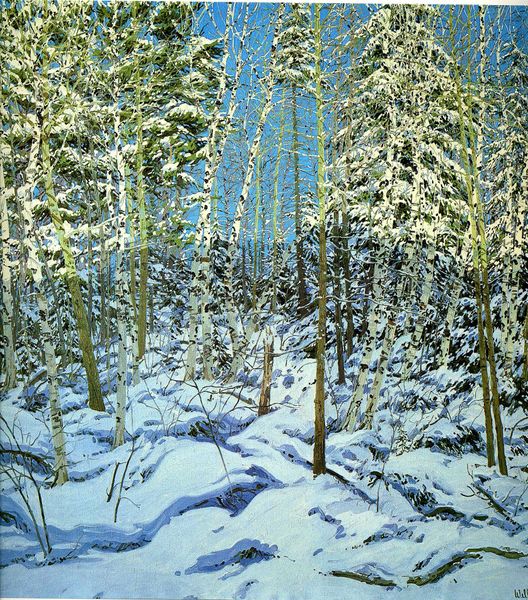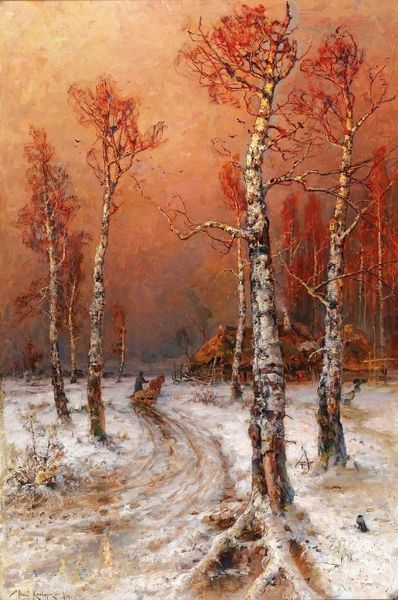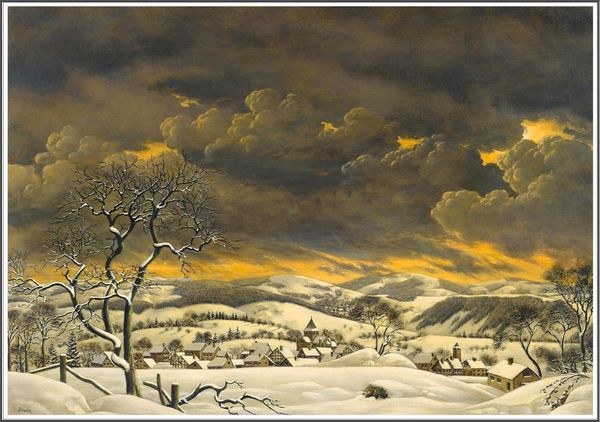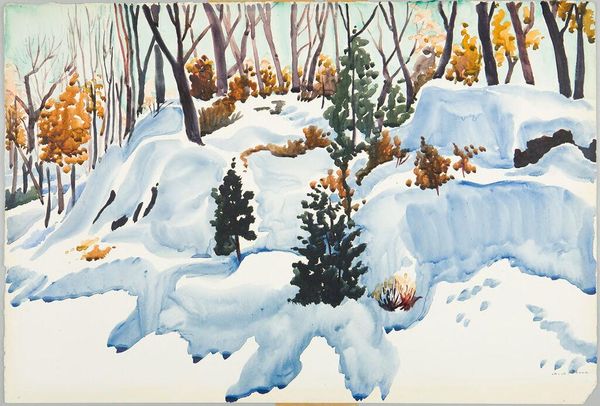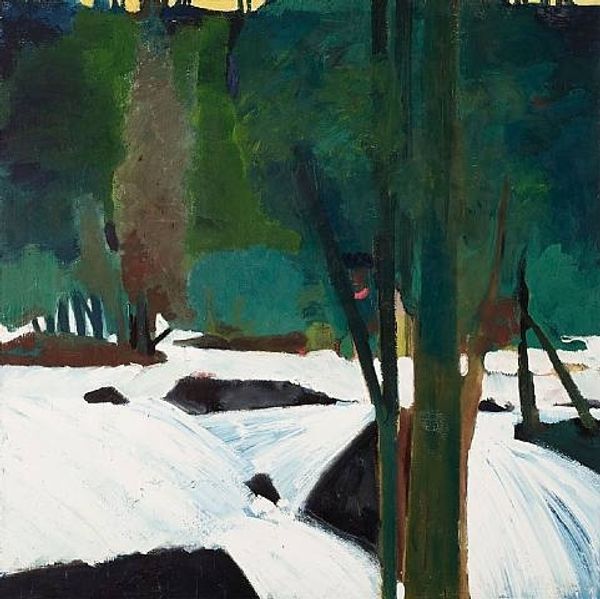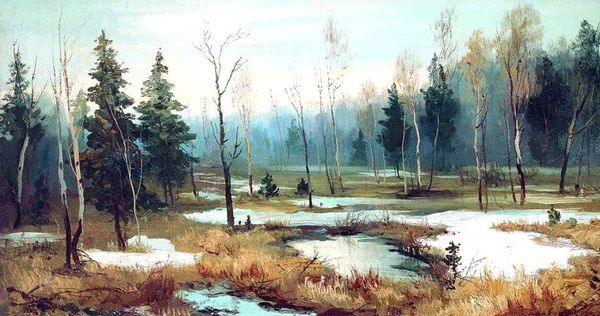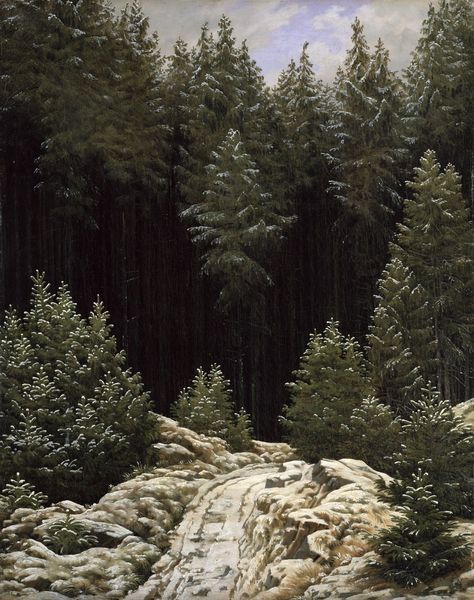
Copyright: Public domain
Curator: Nicholas Roerich's 1912 oil painting, "Solveig's Song (Hut in the Forest)," presents a winter scene with a small cabin nestled amongst trees and snowy hills. Editor: My first thought? Eerily beautiful. It’s as if the whole scene is holding its breath. Those towering trees cast such long shadows on that poor little hut, it feels exposed and vulnerable, almost fragile. Curator: Right, and it's interesting to consider Roerich's position during its creation. Russia at this time was in a pre-revolutionary state; in art, movements like Symbolism and early abstraction flourished and he became deeply involved with the World of Art movement, concerned with questions of national identity and the spiritual in art. The use of simplified forms, strong colors and defined outlines in painting such winter scenes was part of this investigation of indigenous visual language. Editor: I see it more as an expression of deep solitude. The cool palette amplifies that. Yet, I keep being drawn to the materials used – oil paint gives an interesting contrast of flat and glossy sections with texture that brings me to the bark on trees and roughness of that tiny little home. I can almost smell the woodsmoke struggling against the vast silence. Curator: Consider also that Roerich was designing sets for theatre productions such as Ibsen’s ‘Peer Gynt’ around the same period. "Solveig's Song" seems a perfect distillation of the emotional landscapes and mythical longings these productions invoked. We're looking, essentially, at stage design without the stage; it makes visible a yearning that cannot quite materialise. Editor: And to think this quiet canvas springs from theatrical ambition! Looking at it through that lens helps me to perceive the small human gesture represented by the hut as a beacon in a barren landscape, somehow suggesting hope or survival against impossible odds. Did Roerich work on it 'en plein air'? I imagine the wind biting, painting freezing. Curator: Possibly from earlier studies, although much of Roerich's Russian landscapes from this period combine careful observation and formal experiment in the studio. The painting operates on different registers; we read the cabin in the woods on a formal, technical, even historical level, and we're then invited to consider the emotionality you describe: hope, the struggle, our loneliness in face of the monumental and eternal. Editor: Looking again, what strikes me is how relevant this still feels today. So simple, yet laden with anxieties. Maybe Roerich managed to distil something genuinely essential about the human condition and place within the broader, indifferent scheme of things. Thank you; I understand more because of our conversation. Curator: Indeed; looking again it certainly bears consideration. Thank you too.
Comments
No comments
Be the first to comment and join the conversation on the ultimate creative platform.
